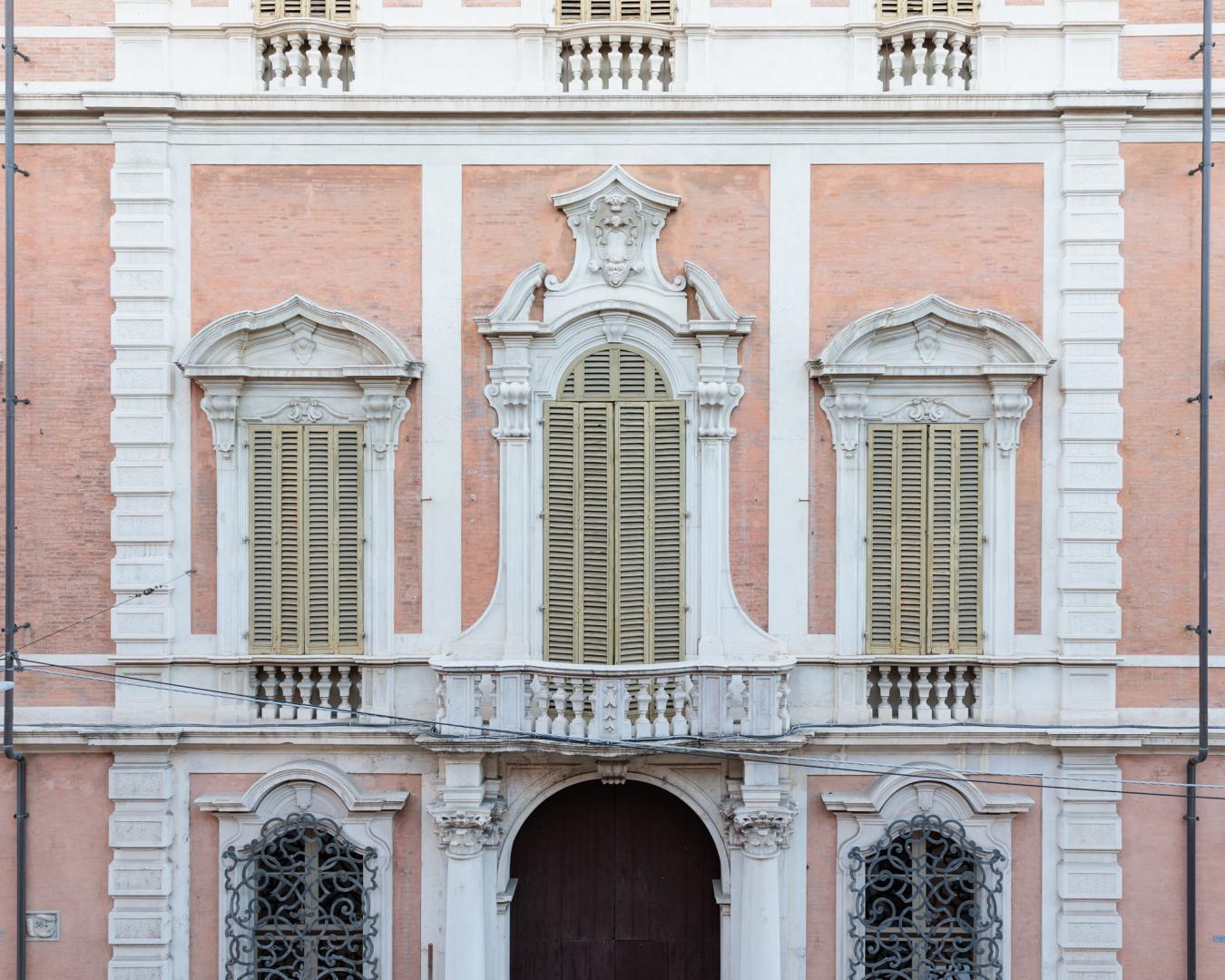The original design of the building was the work of Francesco Maria Angelini, who created the monumental atrium and the staircase in 1725. Upon Angelini's passing, the project was handed over to Alfonso Torreggiani and included the works on the façade and the construction of the noble apartments decorated by Stefano Orlandi and Vittorio Bigari. The design included a garden at end of the building, but this was never carried out.
Aldrovandi manufacturing
In the last few years of the 18th century, a ceramic factory was opened on the ground floor, commissioned by Carlo Filippo Aldrovandi Marescotti. Following the example of the famous English manufacturer Josiah Wedgwood, he created decorative objects and tableware in typical milky white coloured earthenware, but with a porcelain-like look and sound: the technique was destined to become very successful.
In recent times
For many years, the Noble Level housed two important cultural institutions: the Cineteca di Bologna and the Municipal Library. The latter then moved to the Sala Borsa.
Sources
M.B. Bettazzi, Palazzo Aldrovandi Montanari, in Bologna. Guida di architettura, progetto editoriale e fotografie di Lorenzo Capellini, coordinamento editoriale di Giuliano Gresleri, Torino, U. Allemandi, 2004, p. 136.
https://www.bibliotecasalaborsa.it/bolognaonline/i-cartigli-di-bologna-edifici-storici-giardini-e-canali/place/palazzo-aldrovandi-bd720f
https://www.storiaememoriadibologna.it/aldrovandi-manifattura-ceramiche-246-organizzazione
Photo: 1Cinquantesimo

